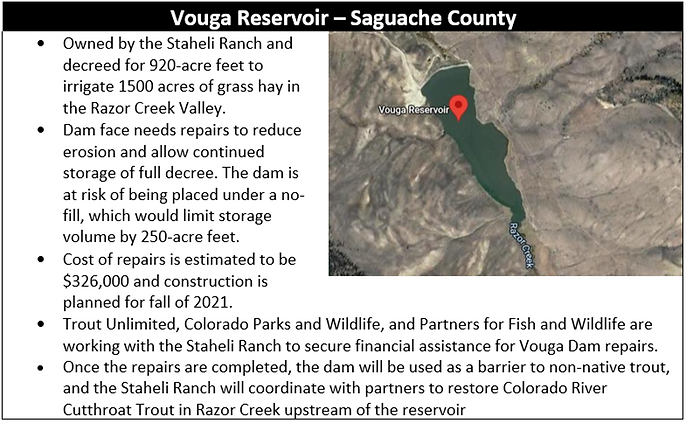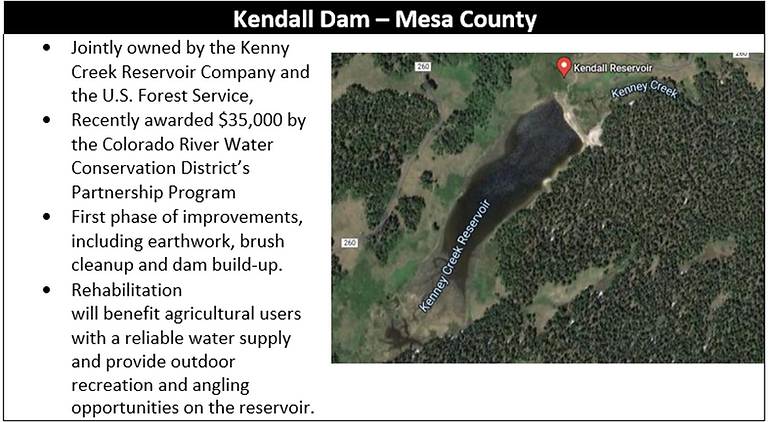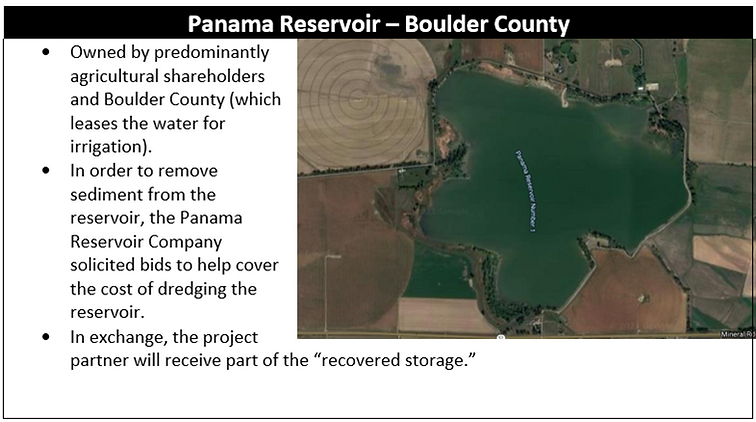
Reservoir Rehabilitation
The Colorado Ag Water Alliance (CAWA) is hosting a reservoir rehabilitation workgroup of diverse water interests. The purpose of this group is to identify reservoir rehabilitation projects that could provide benefits to other water users. CAWA meets with reservoir owners that are trying to address infrastructure and maintenance issues. From that initial meeting, we work with the reservoir owners to find sources of funding, partners, and other opportunities to create competitive and impactful projects.
If you have a reservoir project and are looking for funding options, contact us at coagwater@gmail.com
Restricted Reservoirs
•In an average year, there are about 130 dams with storage restrictions in Colorado.
•When a reservoir is deemed unsafe, restrictions reduce the storage level to less than full capacity. Some reservoirs are on the restricted list for years, or even decades.
•Many of the reservoirs on the restricted list are owned by agricultural interests who do not necessarily have the funds to make repairs.
Restricted reservoirs throughout the state
_PNG.png)
Benchmark Projects



Options for Funding
Colorado Water Conservation Board
WSRF funds, which are dispersed through the 9 Basin Roundtables, can be a great source of funding for reservoir rehabilitation design and implementation. You can learn more about each basin grant program below:
Water Supply Reserve Fund Grants | DNR CWCB (colorado.gov)
The Colorado Water Plan Grant can be used for some rehabilitation projects. While this source of funding isn't often used to rehabilitate infrastructure, it has been used to fund telemetry, sensors, and SCADA improvements for irrigation infrastructure. This grant program has also been used for reservoir dredging.
Colorado Water Plan Grants | DNR CWCB
The Water Project Loan Program provides low interest loans for the design and construction of projects. Often, this loan program is used to provide matching funds for state and federal grant programs.
Water Project Loan Program | DNR CWCB (colorado.gov)
National Resource Conservation Service (NRCS)
NRCS has significant funding under the Watershed and Flood Prevention Operations (WFPO) Program that can be used for agricultural water supply projects. This source of funding is referred to as PL-566 and can only be implemented in areas with a 9 Element EPA Watershed Plan.
Watershed and Flood Prevention Program | NRCS Colorado (usda.gov)
Map of watershed plans throughout Colorado:
Bureau of Reclamation (BOR)
The WaterSMART program works cooperatively with states, tribes, and local entities as they plan for and implement actions to increase water supply through investments to modernize existing infrastructure and avoid potential water conflicts. The Water and Efficiency Grant Program and Reservoir Operations Pilot Program are the most relevant to reservoir rehabilitation.
WaterSMART | Bureau of Reclamation (usbr.gov)
Funding provided by the Bipartisan Infrastructure Law will be dispersed through the Bureau of Reclamation
Bipartisan Infrastructure Law | Bureau of Reclamation (usbr.gov)
Others sources
Recent reservoir rehabilitation projects have taught us that significant sources of funding can come from non-traditional sources, especially if the project can provide benefits to other water users, like municipal, environmental, and recreational interests. Finding these "other sources" of funding is a key role of the reservoir rehabilitation workgroup.